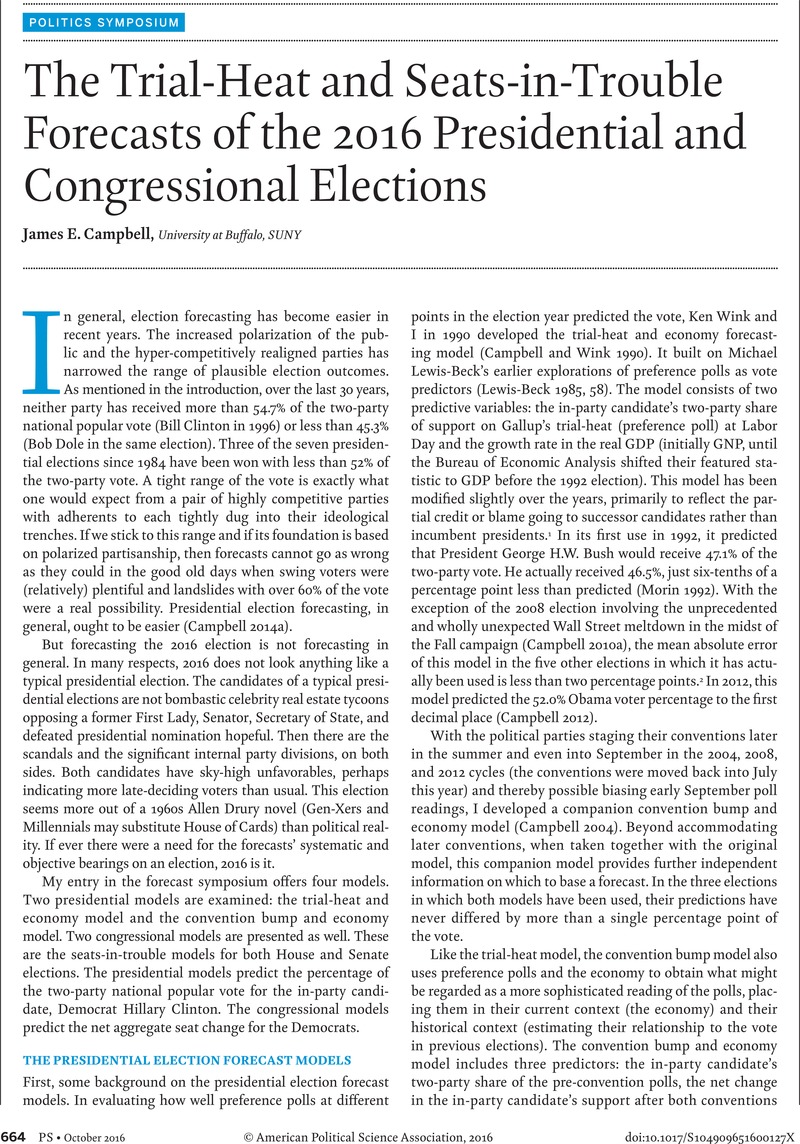Crossref Citations
This article has been cited by the following publications. This list is generated based on data provided by Crossref.
Godwin, Marcia L.
and
Foreman, Sean D.
2018.
The Roads to Congress 2016.
p.
391.
Walker, David A.
2018.
How they lost the presidency.
Applied Economics,
Vol. 50,
Issue. 38,
p.
4113.
Donovan, Kathleen
Kellstedt, Paul M.
Key, Ellen M.
and
Lebo, Matthew J.
2020.
Motivated Reasoning, Public Opinion, and Presidential Approval.
Political Behavior,
Vol. 42,
Issue. 4,
p.
1201.
Walker, David A.
2023.
Forecasting the 2020 and 2024 U.S. presidential elections.
Journal of Forecasting,
Vol. 42,
Issue. 6,
p.
1519.



